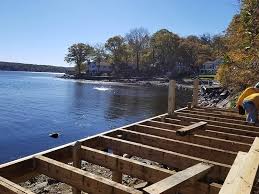A reliable senior care plan should cover all aspects of your loved one’s daily life. Whether your parent needs reminders to take medication or assistance in running errands, it’s crucial that all team members understand their role in the plan.

Check that your senior care provider has a clean background record and is licensed. They should also be flexible and adaptable to changing situations. Contact Providence Senior Care for professional help.
Home care is the support that enables seniors to stay in their homes. It can be provided by family members, friends, or professional caregivers. Home caregivers often complete tasks such as cooking meals, making sure the senior is clean and dressed, running errands, and providing companionship. This type of care is ideal for seniors who need help preparing for medical appointments or need assistance managing their medication. It can also help relieve stress and prevent burnout for their families.
Most aging individuals would prefer to stay in their own homes rather than moving to a nursing home or assisted living facility. Home care services provide a safe environment for them to continue to live in familiar surroundings with access to their personal items and furniture. Home care can also allow them to maintain their daily routines and activities, which can be a major factor in maintaining mental health.
The advantages of home care include a personalized plan, flexibility, and increased independence. Caregivers are trained to recognize and address any issues with your loved one’s quality of life or safety. They are also available to offer support and encouragement. Home care can also improve a senior’s social interactions and relationships with friends and family. They can build a relationship with their carer and receive the emotional support they need to feel secure and loved.
There are many different options for financing home care. Seniors can choose to pay for the service out of pocket, through private financing, or using government programs such as Medicare and Medicaid. The most important thing is to find an agency that provides high-quality care and services. It is also a good idea to start with a trial period to ensure that the home care provider is compatible with your loved one.
The benefits of home care are numerous and are often less expensive than a nursing home. In addition to preventing the need for a nursing home, it can also reduce the number of doctor visits and improve overall health outcomes. It is also more convenient for seniors to receive care at home, where they can be surrounded by their memories and familiar surroundings.
Skilled nursing
As seniors age, they may require more complex care that extends beyond simple daily living activities. In these cases, skilled nursing is necessary to maintain a comfortable, safe and dignified lifestyle. Skilled nursing involves professional care from a team of nurses and other medical professionals who work to manage health conditions. It encompasses a wide range of services, from medication management to physical therapy. It also includes meals prepared by chefs and dietitians, taking into account specific nutritional needs. For example, a senior with heart disease may need to eat low-sodium foods while someone with difficulty swallowing might require softer food.
In many cases, seniors need skilled nursing care after a hospital stay or health crisis. They may not be able to return home due to an injury or illness, and may need round-the-clock supervision to prevent falls, medication errors, and other health complications. In addition, they might require rehabilitation services to improve their mobility and motor, cognitive or speech skills. This type of care is typically provided in a long-term senior care facility, such as a nursing home or stand-alone skilled nursing facility (SNF).
SNFs are regulated by the state and must meet higher standards than traditional nursing homes. Moreover, they offer more comprehensive medical services and Medicare or insurance often covers the cost of stays at SNFs for up to 100 days per stay depending on individual coverage. It is important for a senior who needs skilled nursing to clearly communicate their medical and personal preferences with the staff. They should also bring personal items, such as pictures or blankets, to help them feel more at home.
When choosing a skilled nursing facility, it is important to visit a few and assess the environment and staff. Ask the staff about their training and experience, and look for amenities that will make residents comfortable, such as non-skid flooring and grab bars. If possible, visit during mealtime to see how the facility prepares and serves meals. It’s also a good idea to request a personalized assessment of the patient’s medical, social and emotional needs.
Respite care
Respite care is short-term care that gives caregivers a chance to rest and recharge. It can range from a few days to several weeks and is designed to give primary caregivers the freedom they need to travel, attend family events or tend to personal matters without worrying about their senior loved ones’ well-being. It can also be an opportunity for families to “test-drive” a senior living community before making a permanent move.
Caring for a senior can be extremely demanding, and it is easy to neglect other important aspects of life. Even a few days away from caregiving can make a big difference. Family caregivers often suffer from chronic stress, which can lead to physical and emotional problems. Taking a break from caregiving allows you to return to your normal routine with renewed energy and focus.
While some people may feel guilty about leaving their elderly loved one for a few days or weeks, it is essential to take a step back from your caregiving responsibilities. It can help prevent burnout and ensure that you are able to provide the highest quality of care for your loved one.
In addition to giving family caregivers time off, respite care can benefit seniors by offering them a chance to interact with new people and experience a different environment. Many seniors who live alone are at risk of social isolation, and respite care can help prevent this by allowing them to interact with others in a safe, supportive environment.
As a family member, it can be hard to let go of your role as caregiver, especially if you are caring for a spouse or child who requires special needs. However, it is important to remember that you need to take care of yourself as well as your loved one. This is why it is important to consider respite care as a way to relieve your stress and spend more time with your family. Whether you are looking for temporary care or a long-term solution, Senior Services of America has you covered. Contact us today to discuss your options.
Long-term care
A growing number of seniors are in need of long term care. While most people believe that they can count on Medicare or health insurance to pay for their long-term care, this is not always the case. Traditional health insurance like FEHB and TRICARE for Life usually only covers short-term medical care, such as after a surgery or an accident. It does not cover ongoing care or assistance with daily living tasks such as bathing, dressing, eating, toileting and continence. Long term care can be provided in a wide range of settings, including homes, community sites (adult day care centers), assisted living facilities and nursing homes. It can also be provided by organized service providers such as home health agencies, hospice care organizations or Continuing Care Retirement Communities.
The demand for long-term care has increased with longer life expectancies and a large Baby Boomer population approaching retirement age. The costs of long term care are not only a significant financial burden for individuals, but also for families and society.
One option for paying for long term care is to use personal savings. This option is risky, though, because it can deplete other assets that you may need for retirement or to pass on to heirs. This can also jeopardize your future income, and it can potentially impact your eligibility for government assistance.
Another option for financing long-term care is through private long term care insurance. While this option is more costly than other options, it offers many benefits that can be valuable to seniors in the event of a long-term care need. It can provide access to high quality care and choice of provider, and it can help preserve a senior’s estate and inheritance.
A third option for funding long-term care is through state Medicaid programs and HCBS waivers. This type of care is available to seniors who do not have sufficient assets to qualify for assistance from private insurers. However, it is important to note that these types of programs can be limited in scope and are often based on need.








